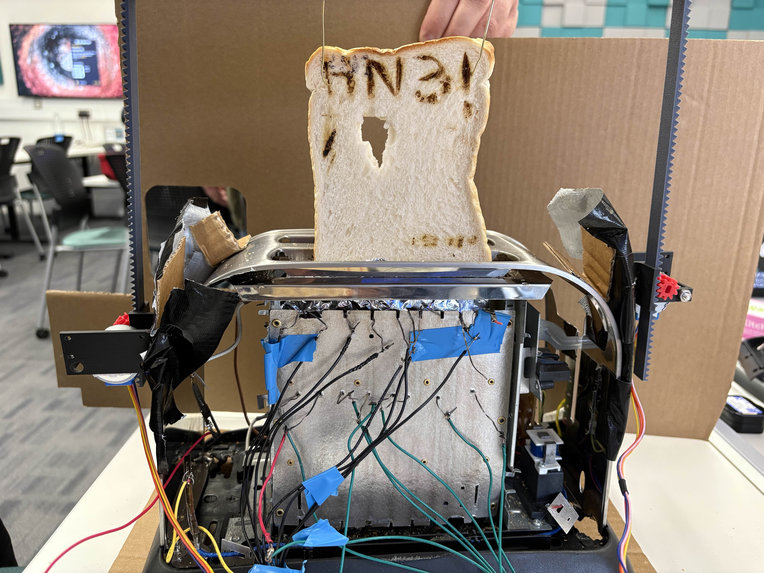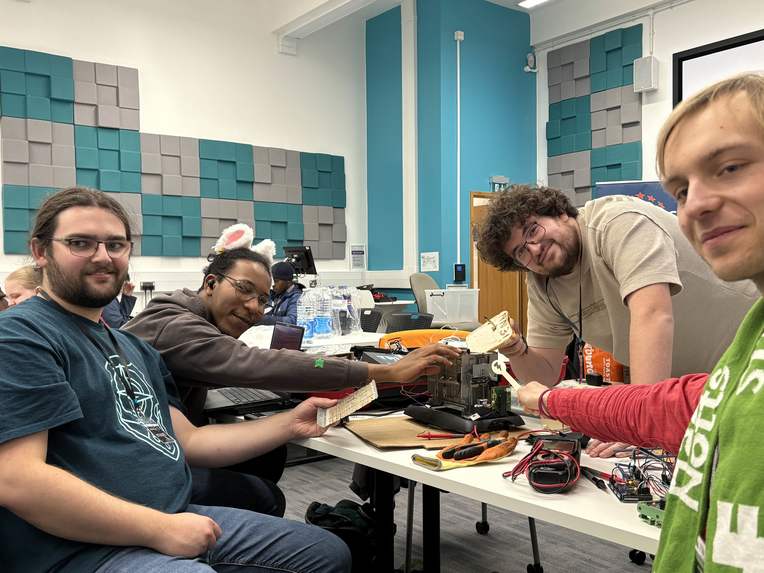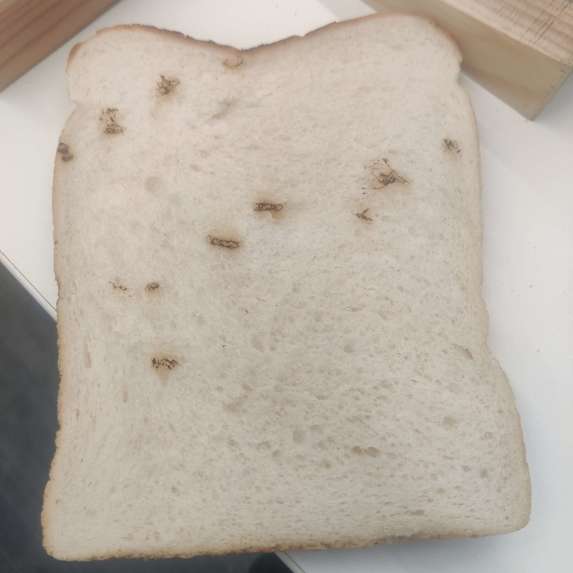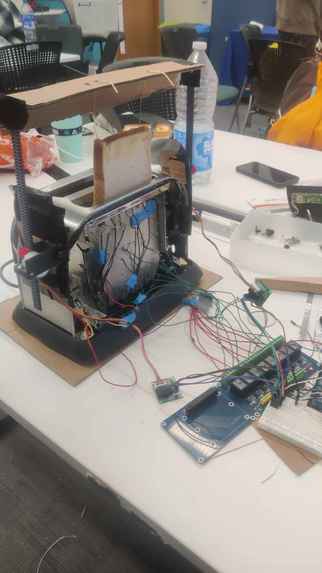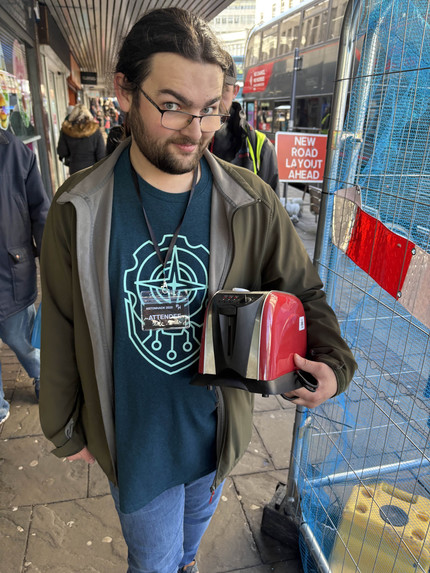Breadboard
22 February 2025, Astonhack 10
We made a toast printer!
It kinda worked. And none of us were electrocuted, working in sleep-deprived conditions with mains voltages. That, in itself, is a victory as far as I’m concerned.
This was a project with myself, Adrian, Daudi, and James. We’ve been wanting to make something silly for ages, and we took this opportunity to do just that. We arrived in Birmingham on Saturday morning and our first task was, naturally, to go to the closest charity shop and buy a £4 toaster.
Our idea was that we could in theory print an 8x8 grid of pixels onto a piece of bread, by dividing the heating element inside the printer into eight and modulating each sub-element on and off while raising the bread. Sounds simple right?
I mean one thing was that it’s absolutely terrifying working on a toaster. It is literally just a big wire plugged into mains, with some controls and stuff.
But with that out of the way (as you will note in the second photo, I am using a wooden spoon to press the toast button, so all’s good), there were still a bunch of problems. I spent a long time on the circuitry around the heating elements, and also the general disassembly (this toaster had safety screws and we did not have a safety screwdriver).
The thing with heating elements is that while they do get hot, they take a long time to turn bread into toast, especially when divided by eight. So we needed to make physical contact between the elements and the bread surface in order to burn the image on. But in doing so, the bread would scrape and bend the carefully positioned elements.
This being the case, a lot of time was spent just fighting with the specific arrangement of the internals of the toaster. We also had to create a heat shield out of foil, inside the toaster, so that the back of the bread didn’t burn before the front could cook. Have you ever been told not to put metal in a toaster? Yeah. Me too. But we’re all grown-ups here.
Daudi, in fitting with his character, wrote a little DSL analogous to g-code for controlling and programming images into the bread printer. Plus, an image-to-B-code compiler. Cool!
In the end, well. We didn’t get any fantastic prints, but we did get some decent results. I was naively hoping to be going back home with a fully functional toast printer, but I should’ve known. It ended up in a bin in the hacking room at Aston. Either way, I’m really happy with how it came out, and we definitely did achieve our stated goal of something “silly”.
Check out the extra write-up on our Devpost!
 Zac Garby
Zac Garby Hackathons
*
Hackathons
*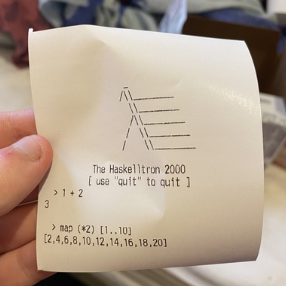 Publications
Publications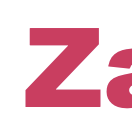 CV
CV